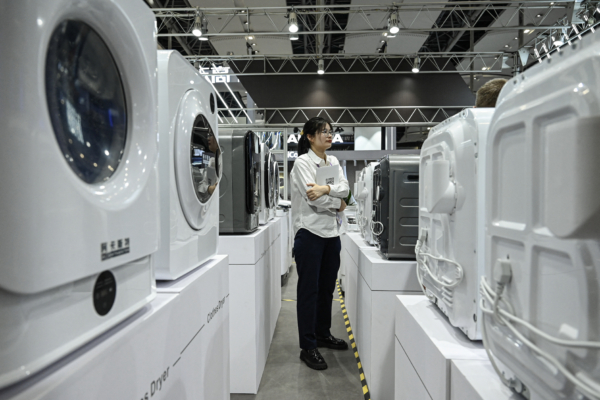The Chinese Communist Party introduced a consumer goods subsidy plan worth 300 billion yuan this year, accounting for about 0.2% of the country’s Gross Domestic Product (GDP), aimed at stimulating household spending to achieve a 5% economic growth target. However, as the program enters its final quarter, the effects are rapidly diminishing.
This program supports the purchase of durable goods such as home appliances, electronics, and electric cars. However, its design of “one-time price reduction” encourages consumers to buy early, leading to future demand being exhausted.
According to reports from Reuters, 36-year-old doctor Lisa Zhu, despite utilizing the subsidy to buy three air conditioners and a washing machine, stated, “I don’t need to buy any more household appliances, these should last me for several years.”
Nomura Securities economist Hannah Liu believes that this policy fails to increase residents’ income to create sustainable consumption but rather encourages consumers to purchase durable goods early, inevitably leading to a “payback effect.”
Despite the relatively small scale of the subsidy program, its contribution to this year’s economic growth surpasses its size. Larry Hu, Chief China Economist at Macquarie Group, estimates that the subsidy may have contributed about 0.5 percentage points to this year’s GDP.
As of the first nine months of this year, refrigerator sales surged by 48.3% compared to the same period in 2024; electric car sales increased by 34.9%; and audio-visual product sales grew by 26.8%.
However, due to the impact of early purchases and the small subsidy base from the same period last year, Nomura Securities predicts that household appliance sales will decline by about 20% year-on-year in the fourth quarter, while auto sales will decrease by 2.0%. This indicates that the “payback effect” has begun to show, turning the subsidy program from boosting consumption to becoming a hindrance.
Salesperson Shi Xiaolan at a home appliance store in Anhui stated that the store’s sales dropped from 13 million yuan in June to 3 million yuan in July and has not recovered since. “Customers made purchases in advance, our sales outlook is not optimistic, and times are getting tougher.”
Data shows that retail sales growth lags behind overall economic growth, indicating that cyclical consumer stimulus measures have failed to stop China’s structural supply-demand imbalance from worsening.
China’s household consumption as a percentage of GDP lags behind the global average by about 20 percentage points, while investment (mainly in infrastructure and manufacturing) leads by about 20 percentage points. This has led to China’s economy overly relying on exports and exacerbating domestic monetary tightening.
Cheng Sha, an air conditioner store owner in Jingzhou, Hubei province, said, “If people don’t have money, these subsidies cannot stimulate consumption.” He fears that once the subsidy effect fades, it will be difficult to continue operating the store.
Experts also believe that without structural reforms, commodity subsidies are only cyclical, short-term measures and are unlikely to revitalize consumption in a sustainable manner.

